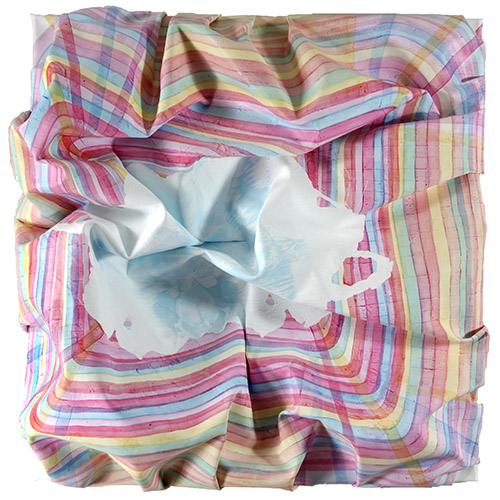Beyond the Frame / 19 May – 2 Sept, 2018
Miranda Parkes Charmer 2009, acrylic on canvas, 2009/10/1. Collection of the Sarjeant Gallery Te Whare o Rehua Whanganui. Tylee Residency exchange, 2009.
Beyond the Frame
from the collection
19 May – 2 Sept, 2018
Frames have traditionally been used to enhance and protect the artworks they contain. Historically ornate gilded frames elevated the status of the paintings they contained and increased their value. Beyond its decorative function the frame also has a practical use and strengthens the artwork making it easier to handle safely without touching the delicate surface.
However, by its very nature, the frame also imposes a necessary constraint on the artwork, forcing the format to remain within two dimensions and usually in a rectangular shape. As a result the majority of paintings and works on paper in the Sarjeant’s collection are in either a rectangular or square format.
This exhibition, drawn from the collection, highlights artworks where the artist has pushed beyond these constraints, producing work that celebrates a freer form, often with a three dimensional sculptural quality.
Miranda Parkes’ Charmer 2009, constructed from a slumped and scrunched canvas over a stretcher, enticingly pushes outwards from the wall towards the viewer, creating a fascinating draped sculptural form. The painted panel in Robert McLeod’s McRaken Wakes #6 1984, nonchalantly leans against the wall, as if temporarily placed there, while Gavin Hurley’s Boy with James K Baxter’s Beard 2016, spills down the wall below the paper edge.
Some works are pieced together from multiple parts assembled directly onto the wall, such as Richard Killeen’s graphic North Star 1979, which can be hung in any arrangement the installer wishes. Gavin Chilcott’s installation Peter at 50 with Lares and Saints 1996, uses an ornate gilded frame but the canvas behind it is hanging freely, draped there by celestial hands. While other artworks, such as Anton Parsons’ photographs 70s Movement and 80s Movement 1998, have abandoned the wall completely, allowing the viewer to walk around them.
Jennifer Taylor Moore, Curator of Collections


